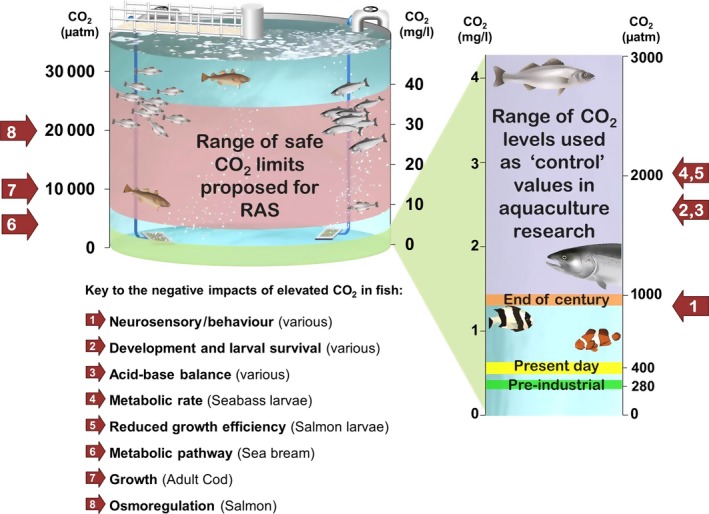Figure 1.

Diagrammatic representation of the levels at which elevated carbon dioxide is considered problematic within recirculating aquaculture systems (RAS) (caused by accumulation of excreted CO 2 due to high stocking densities) and under global aquatic acidification (marine and freshwater, caused by rising atmospheric CO 2). Numbered arrows, and corresponding key indicate the levels at which CO 2 is demonstrated to have significant impacts on fish development, physiology and behaviour. The expanded view on the right side highlights CO 2 levels in relation to climate change scenarios in greater detail (0–3000 μatm or 0–4 mg L−1). Conversion of CO 2 levels between μatm and mg L−1 in this diagram is based on 35 psu sea water at 15°C. Fish images Kovalevska and Kazakov maksim/shutterstock.com. References corresponding to numbered arrows indicate levels of CO 2 shown to have a significant impact of fish development, physiology or behaviour; 1) Hamilton et al. (2014), Jutfelt & Hedgärde (2013), Simpson et al. (2011), Nilsson et al. (2012); 2) Chambers et al. (2014), Frommel et al. (2012, 2014), Maneja et al. (2014), Tseng et al. (2013); 3) Esbaugh et al. (2016, 2012), Heuer et al. (2012); 4) Pope et al. (2014); 5) Ou et al. (2015); 6) Michaelidis et al. (2007); 7) Tirsgaard et al. (2015); & 8) Seidelin et al. (2001).
